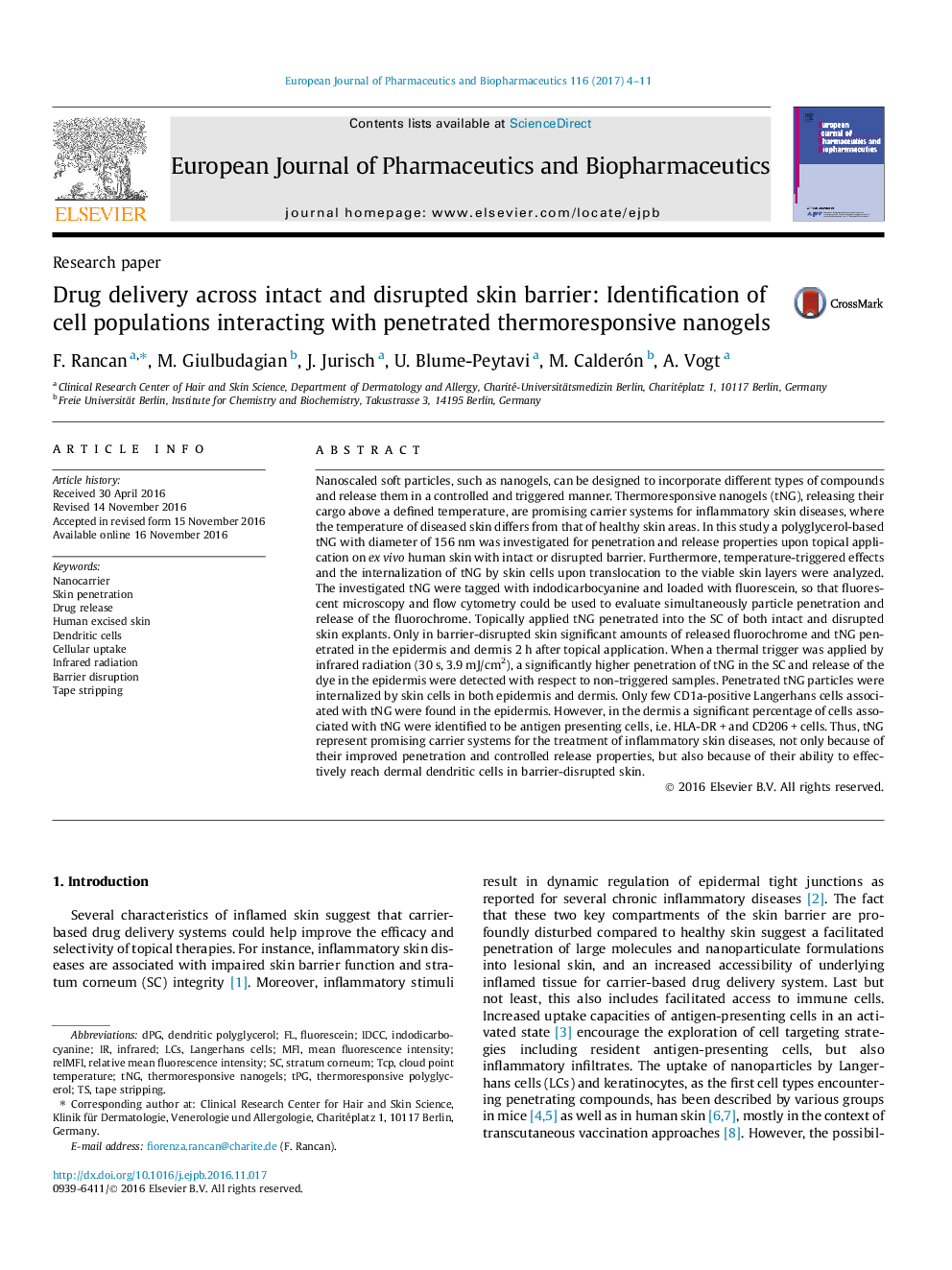| Article ID | Journal | Published Year | Pages | File Type |
|---|---|---|---|---|
| 5521538 | European Journal of Pharmaceutics and Biopharmaceutics | 2017 | 8 Pages |
Nanoscaled soft particles, such as nanogels, can be designed to incorporate different types of compounds and release them in a controlled and triggered manner. Thermoresponsive nanogels (tNG), releasing their cargo above a defined temperature, are promising carrier systems for inflammatory skin diseases, where the temperature of diseased skin differs from that of healthy skin areas. In this study a polyglycerol-based tNG with diameter of 156Â nm was investigated for penetration and release properties upon topical application on ex vivo human skin with intact or disrupted barrier. Furthermore, temperature-triggered effects and the internalization of tNG by skin cells upon translocation to the viable skin layers were analyzed. The investigated tNG were tagged with indodicarbocyanine and loaded with fluorescein, so that fluorescent microscopy and flow cytometry could be used to evaluate simultaneously particle penetration and release of the fluorochrome. Topically applied tNG penetrated into the SC of both intact and disrupted skin explants. Only in barrier-disrupted skin significant amounts of released fluorochrome and tNG penetrated in the epidermis and dermis 2Â h after topical application. When a thermal trigger was applied by infrared radiation (30Â s, 3.9Â mJ/cm2), a significantly higher penetration of tNG in the SC and release of the dye in the epidermis were detected with respect to non-triggered samples. Penetrated tNG particles were internalized by skin cells in both epidermis and dermis. Only few CD1a-positive Langerhans cells associated with tNG were found in the epidermis. However, in the dermis a significant percentage of cells associated with tNG were identified to be antigen presenting cells, i.e. HLA-DRÂ +Â and CD206Â +Â cells. Thus, tNG represent promising carrier systems for the treatment of inflammatory skin diseases, not only because of their improved penetration and controlled release properties, but also because of their ability to effectively reach dermal dendritic cells in barrier-disrupted skin.
Graphical abstractDownload high-res image (162KB)Download full-size image
